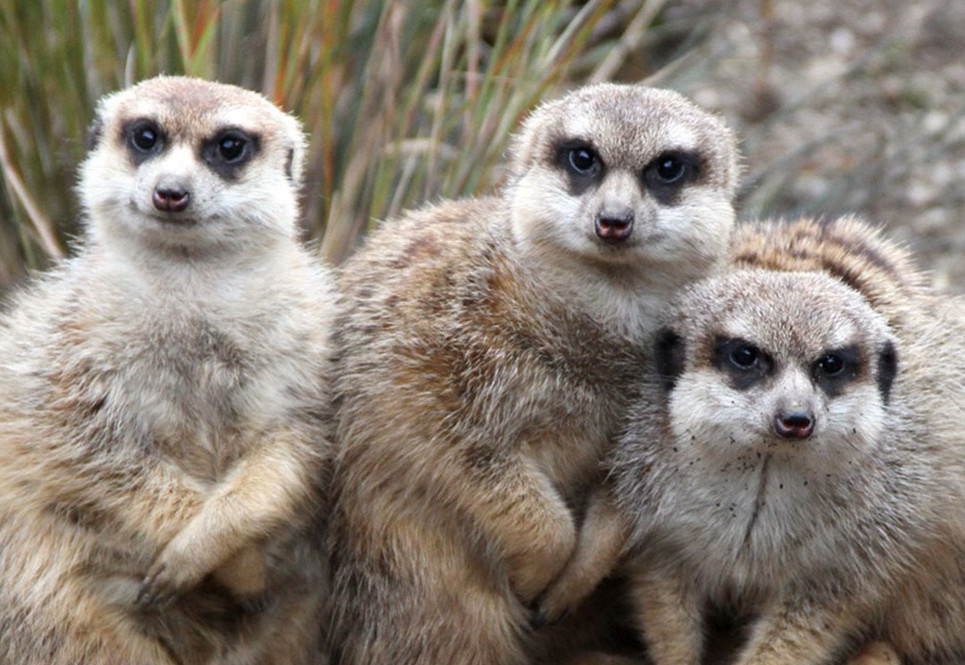Meerkat
Suricata suricatta
.jpg)
There are two small groups of meerkats here at Edinburgh Zoo – our females live together in one group while males live in the other.
Population
Stable
Diet
Insectivore
Habitat
Grasslands
Fact file
Our eldest meerkat is a male named Ace. He was born in 2007 and arrived here in Edinburgh in 2012
A group of meerkats is called a mob, clan or gang
They are insectivores but will also eat lizards, scorpions, snakes, spiders, millipedes and centipedes
All meerkats have a job within their clan. While most forage for food, some care for the youngsters and others act as sentries keeping an eye out for danger
They can have up to five pups in a single litter. The whole clan will help to look after the young with the other females even producing milk for them
Meerkat burrows run up to around five metres long with several entrances, tunnels and rooms
.jpg)
How we're helping
Like all the animals in our care our meerkats are amazing ambassadors for their relatives in the wild and help hundreds of thousands of people connect with nature every year. They encourage visitors to learn about the threats facing wildlife and the action they can take to help create a world where nature is protected, valued and loved.
As a wildlife conservation charity, we care for the animals here at the zoo and work to protect species at risk around the world. From providing expertise in genetics and veterinary health, to protecting wild places with local conservation partners, and even restoring threatened species to the wild, we are active where we are needed most.
Find out more about RZSS conservation
